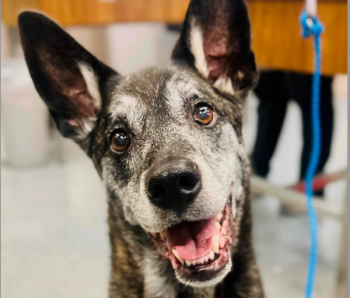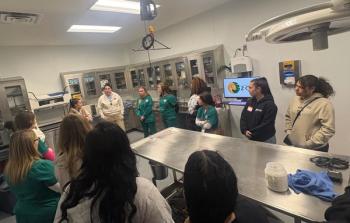
Debt crisis looms for veterinary students
When it comes to the economics of veterinary education, the future is unsustainable for most students.
National Report—When it comes to the economics of veterinary education, the future is unsustainable for most students.
It's a sobering reality, says Dr. James F. Wilson, a practice consultant and educator, that most veterinarians will be entering practice unable to have a life outside of work just to pay back skyrocketing costs of veterinary education.
Wilson made the remarks following the 2011 Pet Healthcare Industry Summit hosted by Banfield Pet Hospital in mid August.
The issue is so disturbing, Wilson says, market leaders put it on its action list for 2012 and beyond.
Tuition has gone up so much that in 2007 the mean debt jumped to 184 percent of starting salaries, Wilson explains. And the numbers are still going up. Last year, the mean debt was pegged at $133,873 or 198 percent debt-to-salary ratio. In 2017, debt is expected to climb to $176,000 with a debt-to-salary ratio of 200 percent. Financial experts say student loans should not exceed 100 percent of starting salaries.
Prior to 2005, the average monthly loan repayment was $846 a month. Just five years later, with interest rates at 6.8 percent, that number ballooned to $1,541 a month.
According to Wilson, no matter what scenario you plug in as far as payback options most veterinarians entering practice will have a remarkably different lifestyle than expected.
The debt problem is so severe, it could pose fundamental pressures on the profession and actually reshape private practice.
How? Veterinarians have already dived into specialization. In fact, in the last few years, the ranks of new veterinarians seeking specialist status grew substantially. Couple that with declines in veterinary visits and revenue, and Wilson warns of a kind of long-term economic drought.
Just look at the numbers. If veterinary students rack up $252,000 in educational debt, as predicted, they will need a starting salary of $145,717 to make repayment on a loan at 15 percent of their gross monthly income.
And that's just in terms of the student loans. Factor in raising children, contributing to a retirement plan, saving for future education, assisting elderly parents and even saving up for a down payment on a home or veterinary practice, and the numbers are even more dismal.
What's even more disturbing, Wilson says, that this scenario is playing out in all fields of higher education. And it will get worse still.
Effective July 1, 2012, there will be no more subsidized Stafford Loans. The move will shift $125 billion in loan volume to unsubsidized loans and the Congressional Budget Office estimates that the cost to students in the next 10 years will climb another $18.1 billion.
The scenario he depicts is probably conservative when compared to the reality.
While states and federal governments are cutting back on veterinary school funding, pinched administrators have had to shuffle more costs onto students while ratcheting up private fundraising efforts to make up budgetary shortfalls.
Wilson is convinced the only hope is a substantial drop in interest rates and availability of income-based repayment plans with loan forgiveness at the end of the 25-year repayment period.
Newsletter
From exam room tips to practice management insights, get trusted veterinary news delivered straight to your inbox—subscribe to dvm360.






